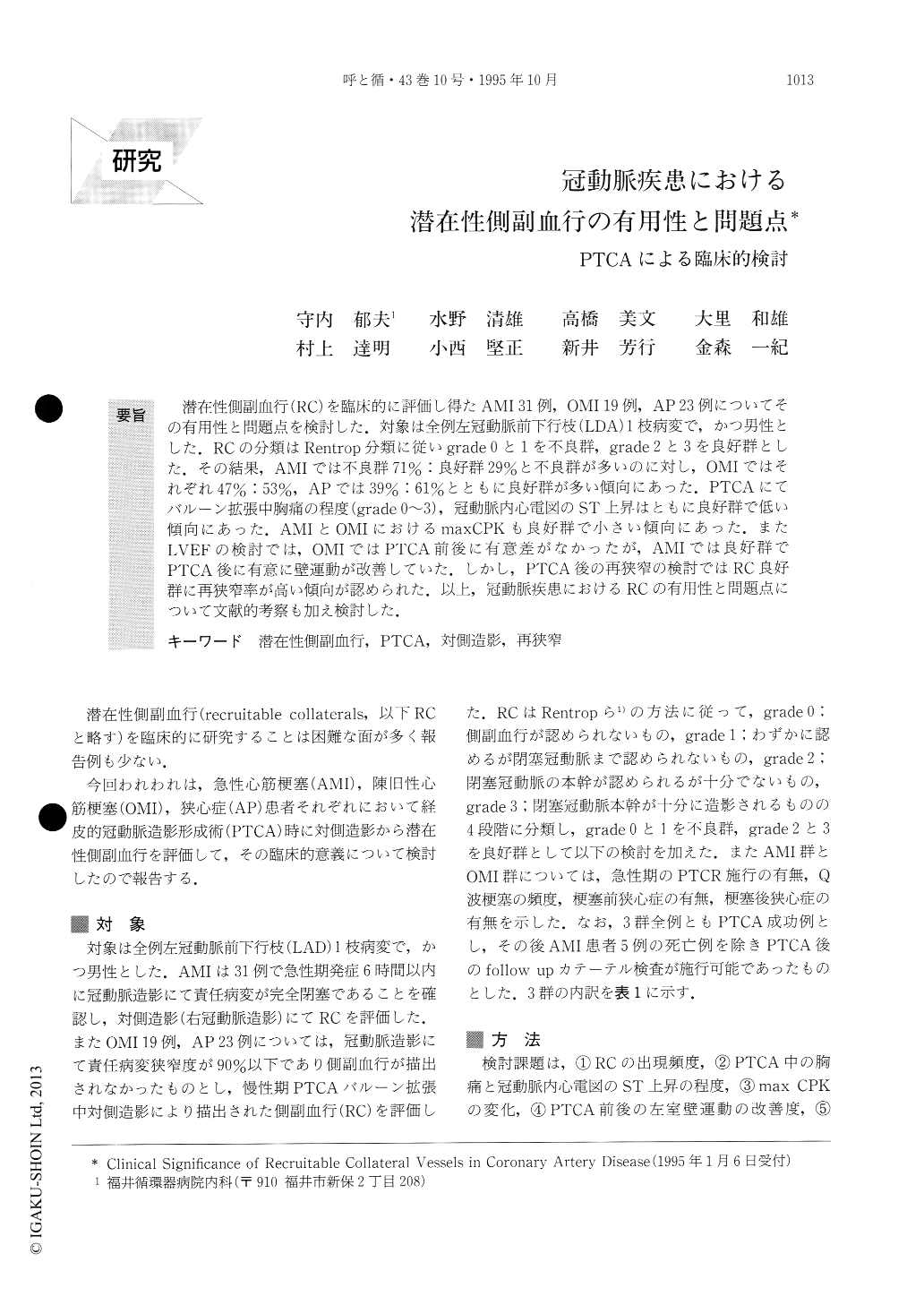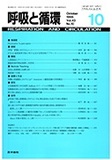Japanese
English
- 有料閲覧
- Abstract 文献概要
- 1ページ目 Look Inside
潜在性側副血行(RC)を臨床的に評価し得たAMI 31例,OMI 19例,AP 23例についてその有用性と問題点を検討した,対象は全例左冠動脈前下行枝(LDA)1枝病変で,かつ男性とした.RCの分類はRentrop分類に従いgrade 0と1を不良群,grade 2と3を良好群とした.その結果,AMIでは不良群71%:良好群29%と不良群が多いのに対し,OMIではそれぞれ47%:53%,APでは39%:61%とともに良好群が多い傾向にあった,PTCAにてバルーン拡張中胸痛の程度(grade 0〜3),冠動脈内心電図のST上昇はともに良好群で低い傾向にあった.AMIとOMIにおけるmaxCPKも良好群で小さい傾向にあった.またLVEFの検討では,OMIではPTCA前後に有意差がなかったが,AMIでは良好群でPTCA後に有意に壁運動が改善していた.しかし,PTCA後の再狭窄の検討ではRC良好群に再狭窄率が高い傾向が認められた.以上,冠動脈疾患におけるRCの有用性と問題点について文献的考察も加え検討した.
In angioplasty, contralateral injection during balloon inflation can detect collateral vessels not spontaneously visible (recruitable collateral vessels). This study investigated the clinical significance of recruitable col-lateral vessels in coronary artery disease. AMI (acute myocardial infarction, n=31), OMI (old myocardial infarction, n=19) and AP (angina pectoris, n=23) were studied during the first successive balloon dilatation for single left anterior descending coronary artery stenosis. All subjects were male. In all subjects, good collaterals (Rentrop grade 2 or 3) were found in 9 patients (29%) with AMI, 10 patients (53%) with OMI and 14 patients (61%) with AP, while poor collaterals (Rentrop grade 0or1) were found in 22 patients (71%) with AMI, 9 patients (47%) with OMI and 9 patients (39%) with AP. Chest pain in patients with poor collaterals was more severe than that in patients with good collaterals. In the AP group, ST elevation on the intracoronary electrocardiogram to the occlusion site was 7.5±3.7mm in those with poor collaterals, and 4.1±3.2mm in those with good collaterals (p<0.05). In the AMI group, max CPK did not significantly differ whether the patients had poor or good collaterals. However in the OMI group, max CPK in the patients with poor collaterals was greater than that of those with good collaterals (p<0.05). Comparing patients in the AMI group before and after PTCA, LVEF (left ventricular ejection frac-tion) increased significantly in patients with good col-laterals but did not change in those with poor collat-erals. The restenosis ratio after PTCA was higher in patients with good collaterals, especially in the OMI group but was not affected in those with poor collat-erals.
Conclusions; The results of this study suggest that good recruitable collateral vessels protect myocardial damage but may increase the restenosis ratio after PTCA. This study supports the utility of contralateral injection during balloon inflation in angioplasty.

Copyright © 1995, Igaku-Shoin Ltd. All rights reserved.


